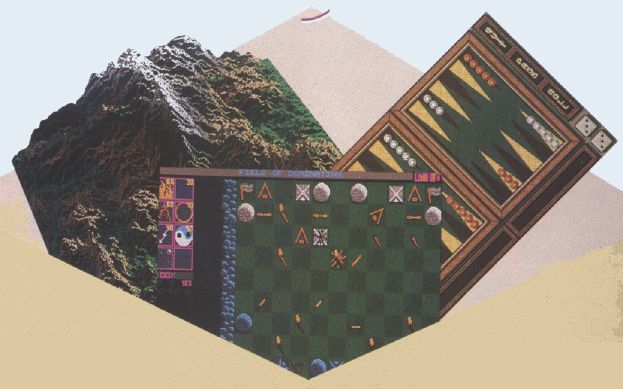The Envelope Please

They were difficult yet entertaining weeks when the Amiga Resource staff sat down to judge the entries in our $10,000 Amiga programming contest. Announced in our December 1989 issue, this contest drew hundreds of entries from all over the world. And, although we received many fine programs, only eight could win: a first-, a second-, and a third-place winner, and five honorable mentions.
Top Honors
Leonard C. Haselman of Livermore, California, won not one, but two honorable mentions with his programs Mountains and Pool. Mountains creates three-dimensional landscapes by using fractal mountains. Completed landscapes, which may include islands and lakes, can be saved in IFF for use with other programs. Mr. Haselman's Pool is a surprisingly accurate simulation of billiards.
You can keep track of your disk collection with honorable mention Disk Scan by Russell Caslis of Placentia, California. Just pop a disk in the drive, and Disk Scan will find every file on the disk, recording its name, creation date, protection status, comments field, and the name of the disk from which it came. Once it's in memory, you can save your list of files to disk, print it, or search it for a particular entry. Scan all of your disks, and you'll never have trouble finding a file again. A great program for user groups that have a large disk library.
Sort Off a sorting algorithm test lab, won an honorable mention for Flynn D. Fishman of North York, Ontario, Canada. This program runs any 2 of 14 sorting algorithms head-to-head and displays the results in realtime using two detailed bar charts.
Foster Hall of Burnaby, British Columbia, Canada, won an honorable mention for his versatile Multiplayer. This small 2048-byte CLI program plays IFF sound samples and displays IFF picture files. Multiplayer's compact size makes it perfect for people with cramped Workbench disks.
Each honorable mention winner received $600 for his program.
Runners-Up
Steve Tibbett of Gloucester, Ontario, Canada, teamed up with Bradley W. Schenck of Thousand Oaks, California, to come up with the contest's $1,000 third-place entry, Gammon X, Steve (author of VirusX, Screen X, and several other popular programs that end with an X) provided the programming savvy while Brad (the two-time BADGE killer demo contest winner) designed the game's graphics. Besides looking beautiful, Gammon X is hard to beat. Fortunately, you can use the program to play against another human player if you don't like competing with a machine.
The $2,500 second-place entry, Monark, was sent in by Richard J. Miner of West Boylston, Massachusetts. Monark is a multiplayer game in the spirit of the Parker Brothers board game Risk and the classic computer game Hammerabi. It has all the features of a complex war game without all the tedious paperwork or tiny pieces. You're the absolute ruler of a government, and as such you must carefully budget your resources between economic development and military spending. The player who ends the game with the wealthiest country wins.
And the Winner Is ….
The $3,500 first-place prize goes to Mike Duppong of Buhl, Idaho, for Field of Domination (FOD), an original two-player tactical board game based loosely on chess. We say loosely because chess never had pieces that slung rocks, torched other pieces, or cast magical spells. Oh, and don't forget the all-powerful Wizard whose approach is preceded by high winds and a bolt of lightning. FOD's pieces are often animated, and the game is filled with digitized sound effects.
Mike Duppong says the basic concept for FOD is over three years old. His initial ideas were sculpted on an Atari ST, but he completed his game on the Amiga, a machine Mike refers to as the best-performing and the flashiest computer on the market. He says it was the contest that pushed him to finish the game.